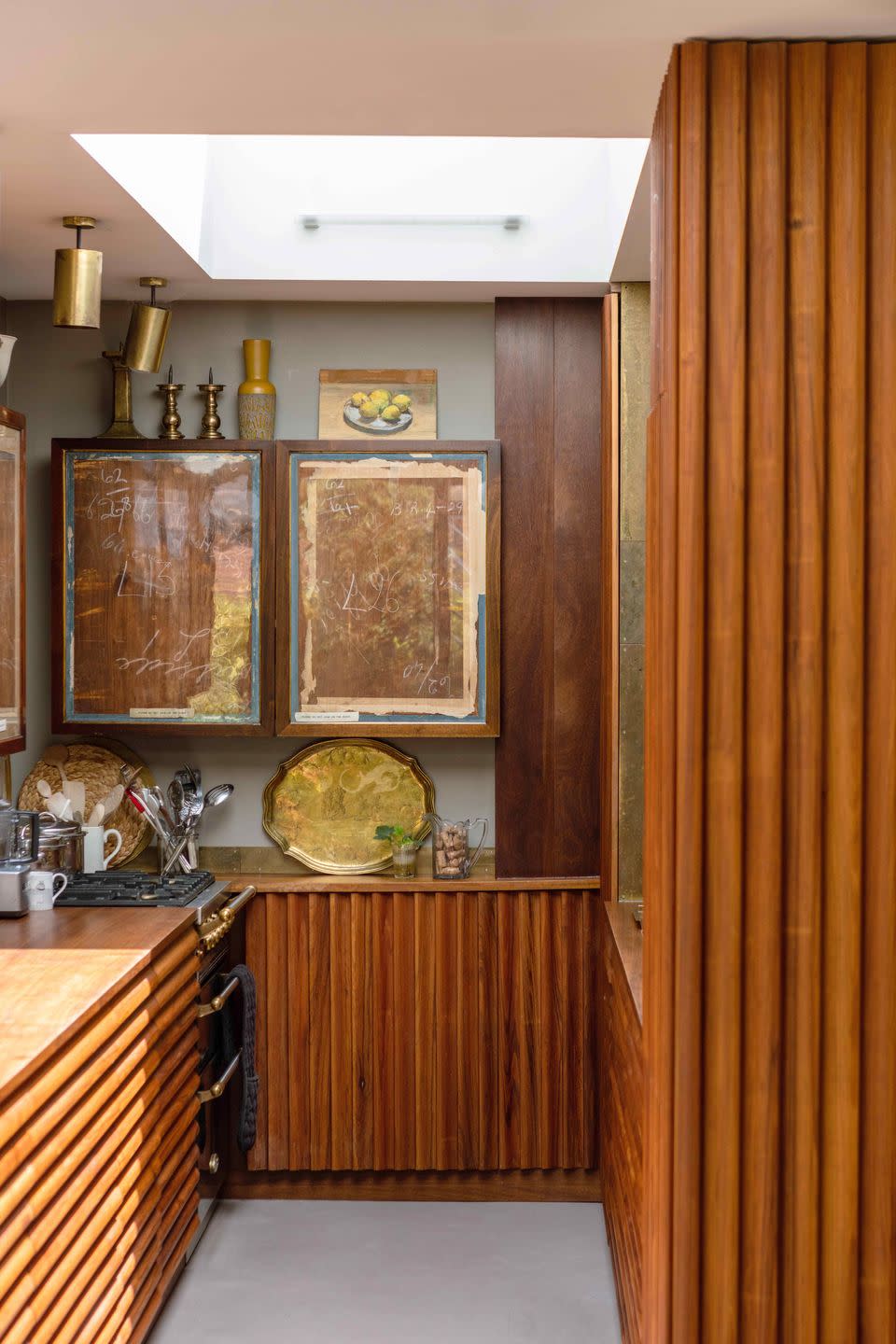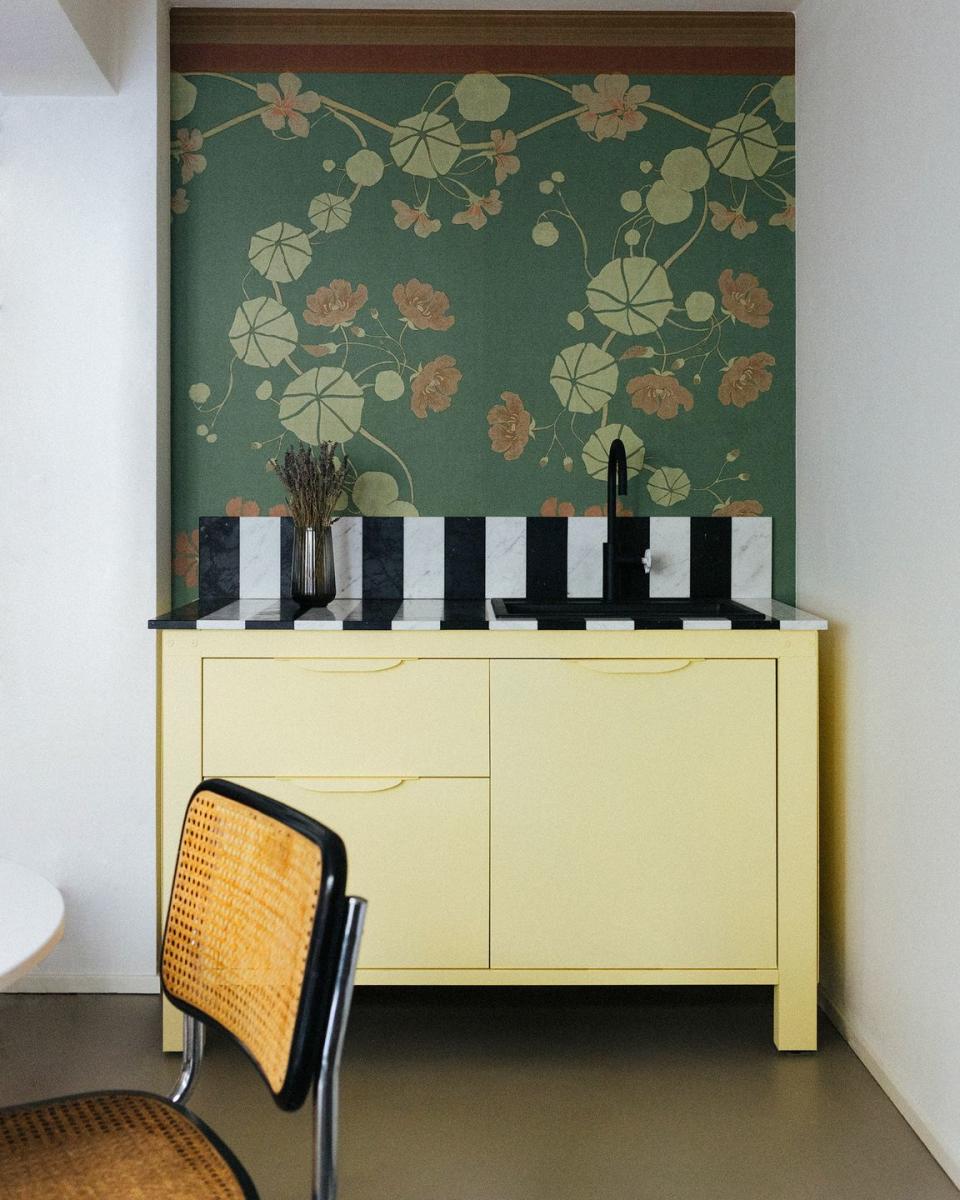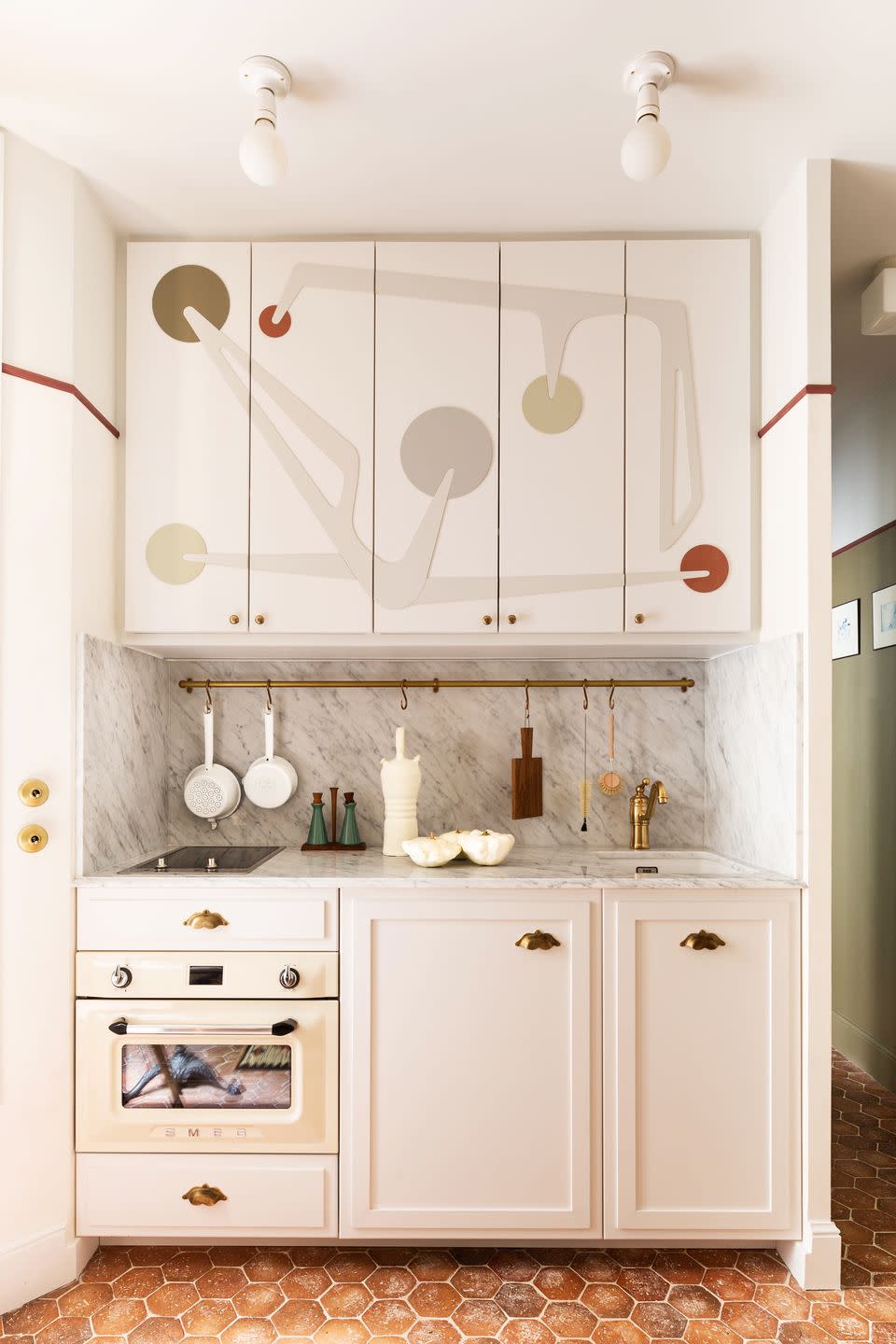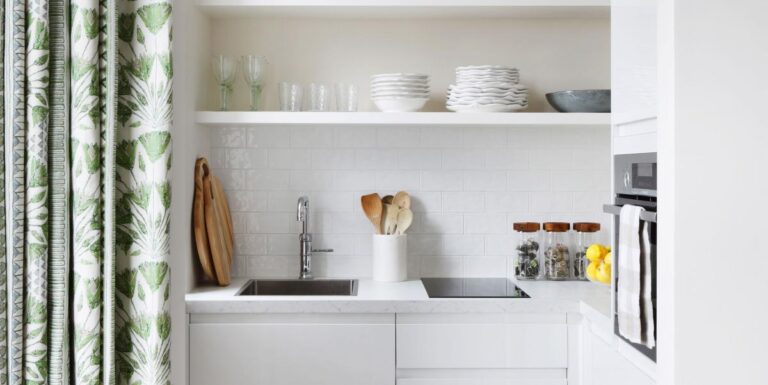“We call it the Jamie Oliver phenomenon,” Maria Speake, founder of interiors and renovation company Retrovius, says of the big, open-plan kitchen spaces that have been the dream of many homeowners in recent decades.
“It's all about the chef putting on a show behind a big island and handing out small portions of delicious food.” But Speake is noticing that this kind of performance space is moving away. “Small kitchens are definitely coming back in popularity,” she says.
It's true, small (and sometimes really tiny) kitchens are becoming more and more popular.
While there are certainly socioeconomic reasons for rising housing costs and the rise in people living in smaller apartments, especially in cities, it's not all about necessity. For many, downsizing their kitchen is a choice. Maybe the space it takes up could be better used for working from home or exercising, or maybe they've found their cupboards filled with takeout meals rather than ingredients and cookware.
If it doesn't have heart, why make it the focal point of your home? Says Marianne Evenou, French interior designer and queen of stylish small-space living: “Small doesn't mean ugly. Charm and quality are not the prerogative of large kitchens.”


For Speake, her love of tiny kitchens was something she noticed in her first apartment in Glasgow, which she shared with her husband and business partner, Adam Hills. “The door to that apartment was so narrow (less than 60cm wide) and it felt like no one could get in, which was great,” she recalls. “You know how people love to spend time in the kitchen? Personally, I find it distracting when I'm trying to cook. I don't want anyone there to look into the oven and think, 'Damn!'”
That experience influenced the style of the kitchen in their current home, which was relocated during the renovation to what was once a dressing room. Speake acknowledges that open-plan kitchens are great for when you have small children who need some extra supervision and stimulation, but as her own kids got older, she found herself wanting to return to a smaller galley.
Marlena Banaszewska, one half of the Polish interior design duo La Fala Studio, adds that making the kitchen more enclosed has practical benefits too: “It provides a bit more privacy, especially in situations where someone is cooking or cleaning up while the other person is in the living area,” she says. “Plus, it helps limit the transmission of cooking smells and sounds.”


Gone are the earsplitting sounds of frying pans clanging drowning out your favorite TV show, and the unpleasant smell of fried onions soaking into your laundry. Of course, not everyone agrees. Very Simple Kitchens is known for glamorizing small kitchens with its metallic, colorful modular designs, but the Italian brand believes that “cooking has always been synonymous with conviviality and sharing,” says communications specialist Barbara Borghi. Their mission: to offer designs that can grow with cooks as their situations change.
In fact, freestanding cabinets or islands like this “Kitchen Island” from Very Simple Kitchens are a stylish, smart, and sustainable choice, as they contain all the essentials (oven, sink, storage) and are even designed with casters, so your kitchen can be taken with you if you move.
The idea was conceived by Jakarta-based duo Dimas Satria and Ardi Hartono of Dua Studio when they were renovating a friend's tiny home and created a compact “box of possibilities.” The duo admit that their design isn't perfect in terms of functionality, but they hope it “presents new ideas for how people should interact with the kitchen.” The same idea occurred to the designers of innovative brand Falper, whose “Small Living Kitchens” pack a high-end, luxurious chef's paradise (think marble, wood, and stainless steel) into units measuring just 2.5 square meters.


Whether by choice or necessity, small kitchens are definitely on trend. But how do you make the most of them? According to Sarah Peake, founder of Studio Peake (the designer behind the project pictured in this feature), perhaps the most important consideration is to avoid clutter.
“Everything needs a place. A clothes rail with S-hooks will help you store pots and utensils out of the way. Appliances should also be kept to a minimum and consolidated to keep the space as simple as possible.” Her advice? “If you have a tap for boiling water, you don't need a kettle.”
“Be honest with yourself about what type of person you are when it comes to organisation,” adds Maria Speak. “Lots of people dream of open shelving, but not everyone can manage that well. If you can't, the best solution is to hide everything away!”
Once you've got order, the next thing to consider is bringing personality to the space. Just because your kitchen is small doesn't mean it has to be boring — quite the opposite. “Go bold and choose brighter colors rather than classic ones to make your kitchen stand out,” advises Borghi of Very Simple Kitchen. “This will keep the focus on the design, not the size of the room.”


The upside of having less space is that it allows you to make more extravagant choices. Peake suggests opting for more affordable marble worktops in compact kitchens, while Evenou recommends pampering yourself on all levels. “The most efficient way to combat limited space is to choose what you consider to be the most beautiful (nice tiles, gorgeous taps and sinks) and be lavish with all the details (doorknobs, switches, sockets),” she advises.
Alternatively, Speake points out that the need to use less could open the door to a more sustainable approach. For splashbacks, which require fewer tiles than usual, she suggests using leftovers (even from reclaimed sites or past DIY projects) or thinking outside the box. In her kitchen, she has some old brass trays lined up that, she says, “have a really pretty glow at night.”
“Before you start cooking, looking at your kitchen should make you hungry, excited and ready to act. That's the secret to creating a great room, no matter what size it is,” concludes Evenou. “Get clear about what you really need and be practical and efficient, but leave room for your imagination. Think of your small kitchen not as an exercise in constraint, but as a place to reflect on what you really need. Let your imagination run wild – infuse poetry, add artwork and create a space that's uniquely yours.”


